Mississippi Delta, 2017: Part 2 (Leland to Nelson Street, Quito to Moorhead: From the "Hellhole of the Delta" to where the Southern cross the Dog
 Monday, May 15, 2017 at 10:40AM
Monday, May 15, 2017 at 10:40AM We continued exploring the deep Delta, the area between Greenville and Greenwood. Earlier in the trip, we'd stood in Congo Square in New Orleans, birthplace of jazz and funk. Now, if you like, we were immersing ourselves in the incubator—the crucible, perhaps—of the blues. When we left off, we were at the Highway 61 Blues Museum in Leland, Mississippi. Just outside of Greenville, Leland was known circa 1908 as the "hellhole of the Delta." The museum restricts its focus to musicians from around Leland.
(I should mention that Leland is the birthplace of Kermit the Frog. The wonderful Jim Henson grew up here, and there's a museum dedicated to his boyhood in the Delta. We unfortunately didn't get a chance to check it out.)
At the museum, we were non-plussed to learn we'd been in the presence of a star, Eden Brent, when we dropped in at Teddy's Juke Joint outside of Baton Rouge at the outset of our trip. We'd noticed an unassuming woman in street clothes mingling with Teddy and guests as Selwyn Cooper & the Sharecroppers jammed. Later, she casually moved over behind the keyboardist and, much as you see in the photo below, offhandedly began tickling the ivories from over his shoulder. We were absolutely blown away by her virtuoso boogie-woogie runs. How could we have know then that this was Eden Brent, who'd learned at the knee of the great Abie "Boogaloo" Ames, one of the Nelson Street greats—indeed, the "Mozart of the Delta."
Pat Thomas, son of the great Leland bluesman James "Son" Thomas, continues his father's legacy, both as a musician and as a sculptor. The museum contains several of Pat's funky folk-art pieces.
The sculpture shown in the photographs below is an assemblage by Jay Kirgis. The wax figure inside represents an African griot (history story teller), which symbolically represents Robert Johnson. Painted panels tell the mythological tale of the crossroads.
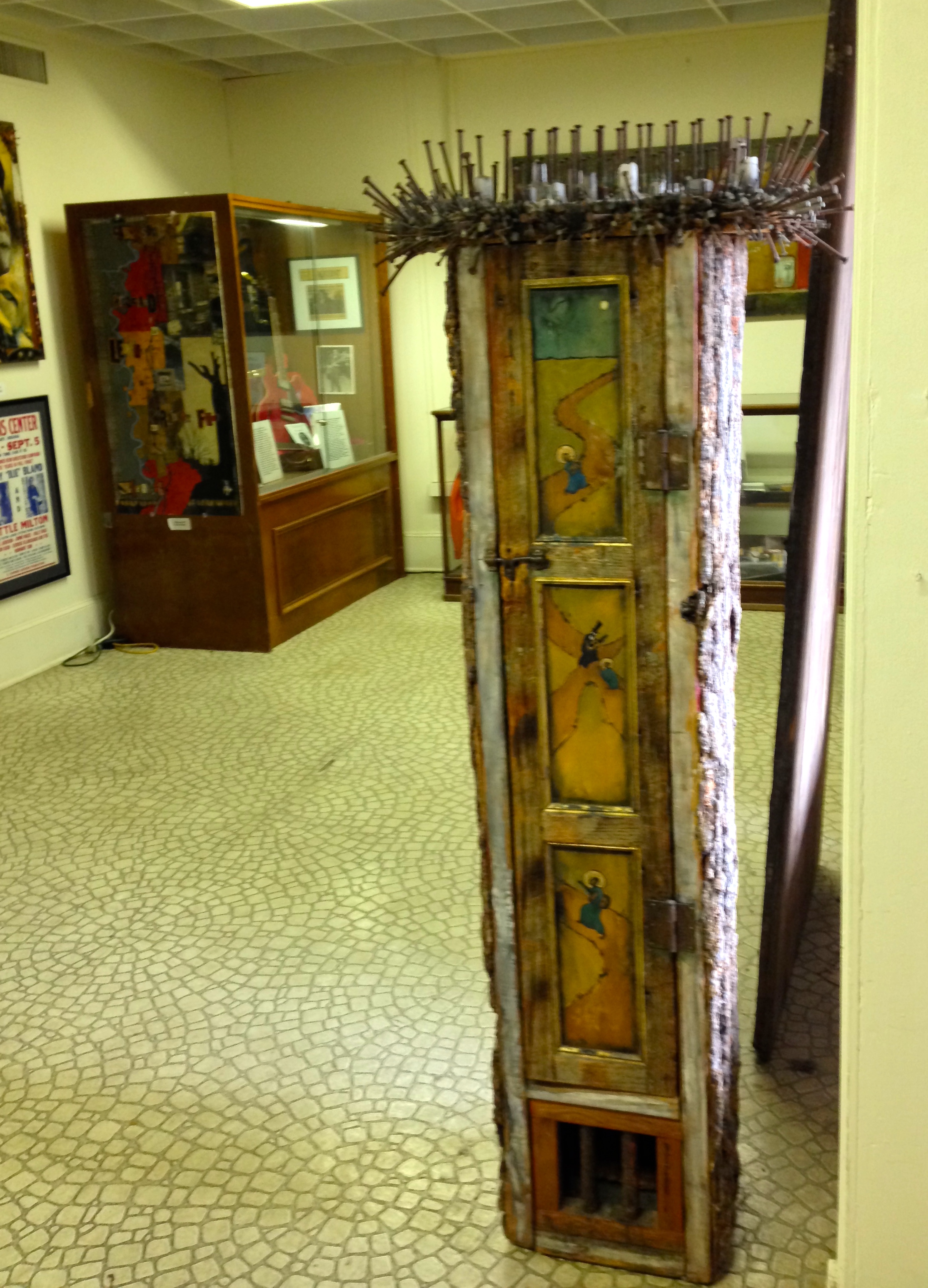

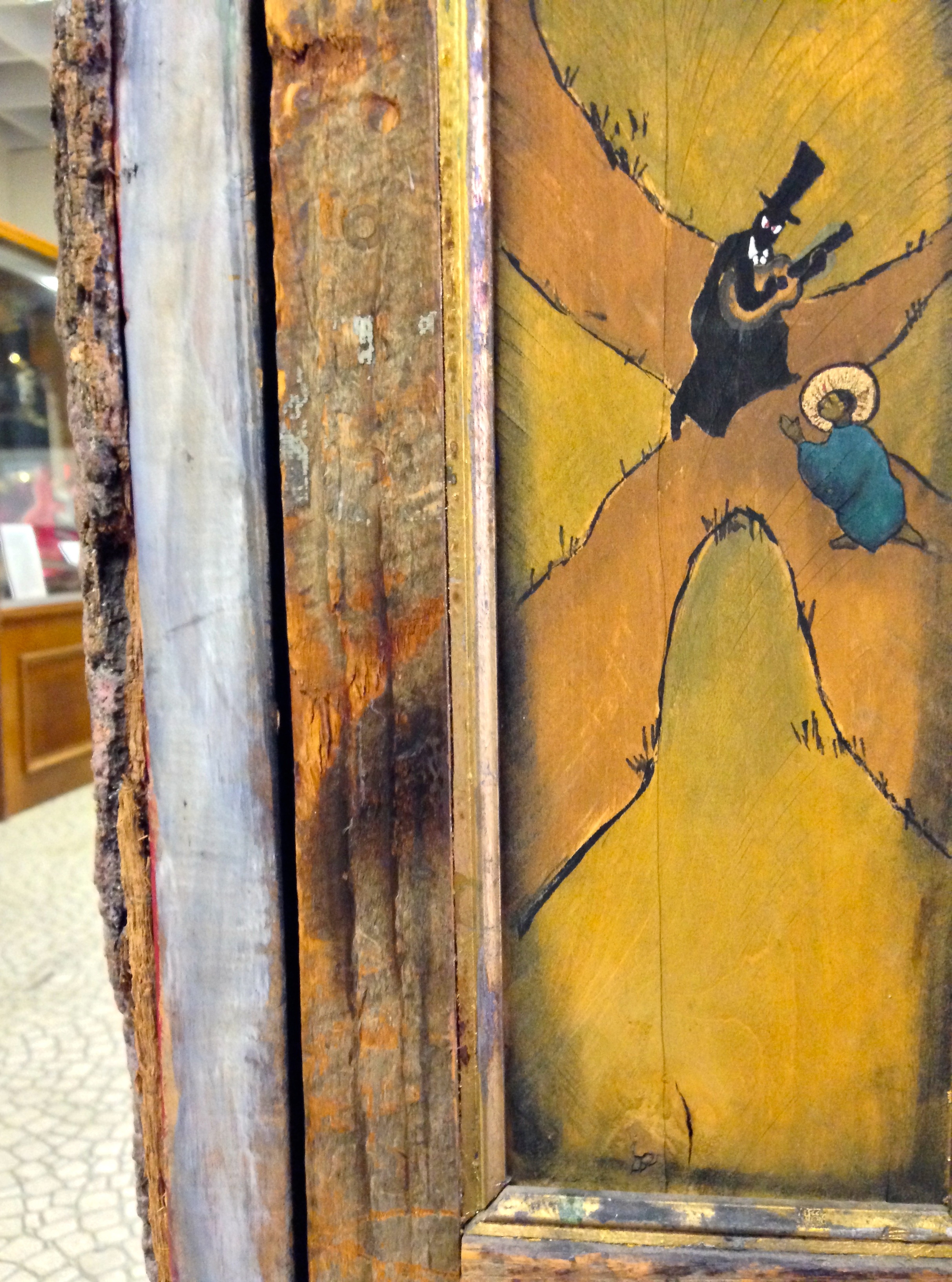
Back on the street, we knocked about a bit. Cristen Barnard, whose murals we'd admired in Tutwiler, was the "Tom Sawyer" behind this mural in Leland, which she painted in 2000 along with Jay Kirgis and a cast of locals. It is restricted to bluesmen born within 25 miles of Leland. You've got Boogaloo Ames, Jimmy Reed, Little Milton, Eddie Cusic, Willie Foster, James "Son" Thomas, and Johnny and Edgar Winter, all clustered around the Highway 61 sign.
Nearby is a mural dedicated to B.B. King, who hailed from Indianola. (We'd get over that way ourselves, soon.)
There's also a mural depicting "Delta Dancing" at Lilo's Italian restaurant, which is still there. Back when Boogaloo Ames was alive, he'd play there with young Eden Brent. Quite a great Mississippi story, incidentally, the friendship between the old black bluesman and the young white woman. I understand there's a film about it, Boogaloo and Eden: Sustaining the Sound (1999).
Speaking of Nelson Street in Greenville, that storied street of blues lore, at the museum we'd seen this placard.
So we had to roll over to Greenville and take a look. Unfortunately, as Roger Stolle, fount of blues knowledge and proprietor of the funky Cat Head Delta Blues & Folk Art shop in Clarksdale, would later tell us, the only reason to go down to Nelson Street today is to score some crack. Checking our supply of crack, we noted we were all stocked up and thus had no reason to get out of the car. We snapped a picture of this mural from the window of our rolling car and beat it out of town. Very sad. At the far left in the mural you see Milton Campbell (Little Milton), who had a hit record with "Annie Mae's Cafe," about Perry Payton's legendary Nelson Street club, The Flowing Fountain.
Back at home base, there was a gorgeous sunset over the Shack Up Inn in Clarksdale. As the sky burned over our Red House, I thought of that line, "the sky was red from off towards New Orleans."

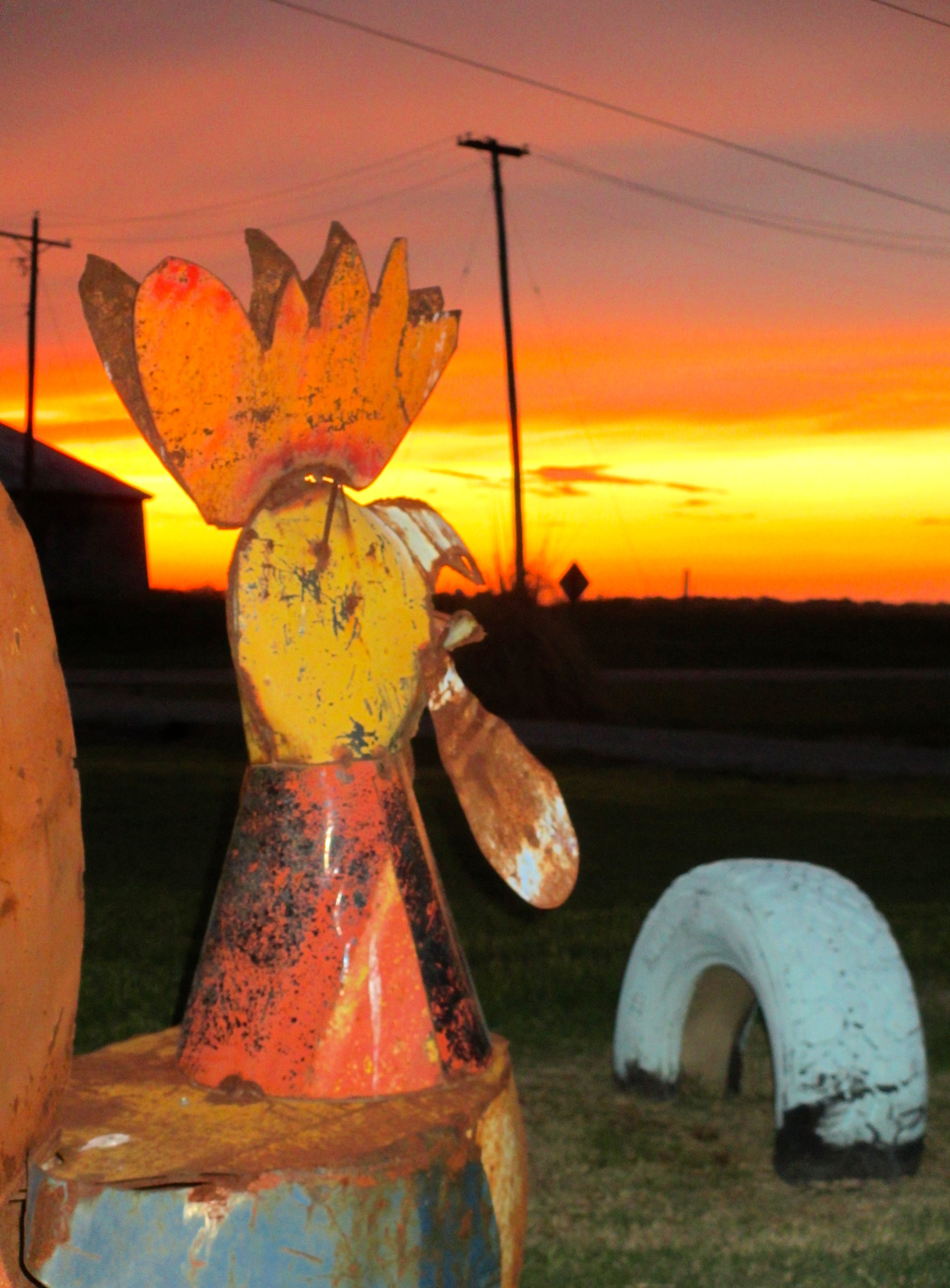

That evening, we went over to the Hambone Gallery and caught a set by Terry "Harmonica" Bean. Before he began a song, he'd tell us how his grandfather used to play it, and then he'd demonstrate. Harmonica Bean is a living link to a departed generation of Mississippi Delta bluesmen.

I also got to hang with Watermelon Slim, one of my heroes and a certifiable cool cat.
The next day we set out for Quito, a town near Greenwood so small it's not even on the map. On the way we passed the spot off highways 82 and 49 where the Three Forks juke joint is believed to have once stood. That's where Johnson played his last note, jamming with Sonny Boy Williamson II prior to—as legend has it—being poisoned by the owner of the club, who objected to Johnson's dalliances with his wife.
We were looking for Payne Chapel, near where we knew to look for one of the three existing graves for Robert Johnson. Now, it's generally agreed today that Quito's not where Johnson's really buried: his true resting spot is likely north of Greenwood.
We'd been there back in 2014, when, inspired by Rosanne Cash's fine, haunting album "The River and The Thread," we'd driven down Money Road over the Tallahatchie River and out to the cemetery at the Little Zion M.B. Church. As we went over the Tallahatchie Bridge, we were thinking about Emmett Till and Robert Johnson all the way. ("A lonesome boy in a foreign land...And a voice we’ll never understand/One lies in the Zion yard, And one sleeps on the river bar/Neither one got very far, Out on Money Road."—Rosanne Cash, "Money Road")
Oh, and Bobbie Gentry. Why did Billy Joe Mac Allister jump off the Tallahatchie Bridge? (The next four photos are from 2014.)


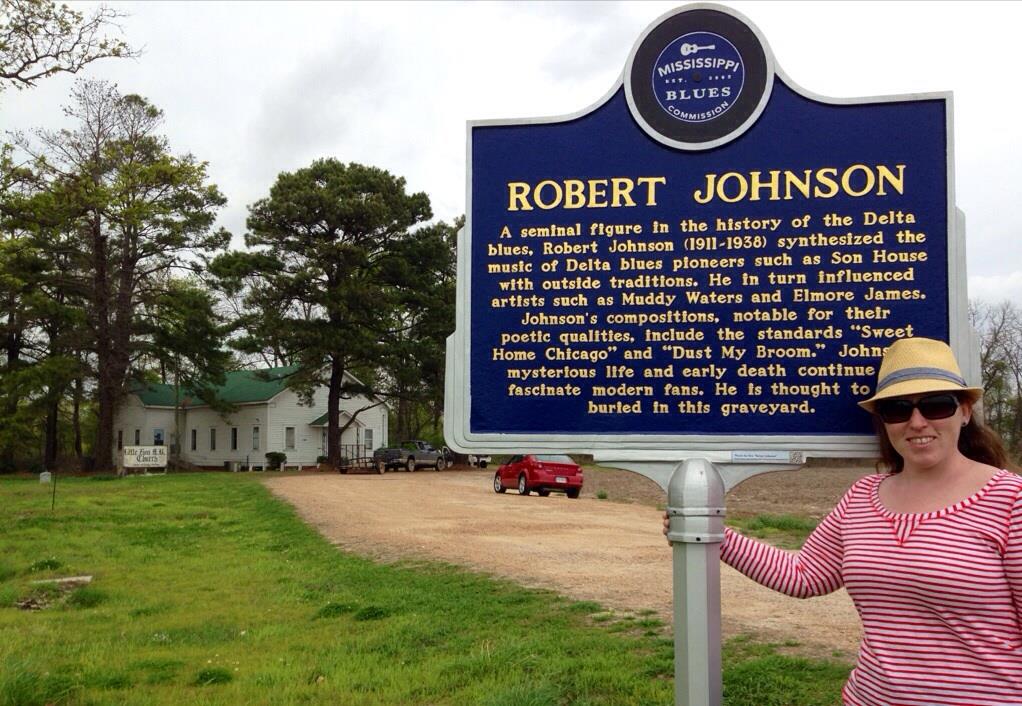

Back in 2017, it was still fun to find the Payne Chapel and the grave.
Next, we made it over to Moorhead, to visit another legendary spot in blues lore. As recounted in the last episode, in Tutwiler we'd stood where W.C. Handy did in 1903, when he heard a bluesman singing about "I'm goin' where the Southern cross the Dog." The fellow was talking about the point where the Southern railroad crossed the Yazoo & Mississippi Valley Railroad (the "Yellow Dog"). As Steve Cheeseborough recounts, Handy would go on to appropriate the line for his own "Yellow Dog Blues," and blues greats who sang about it included Charley Patton and Big Bill Broonzy. If you could get to Moorhead, you had a shot at getting out of Mississippi.
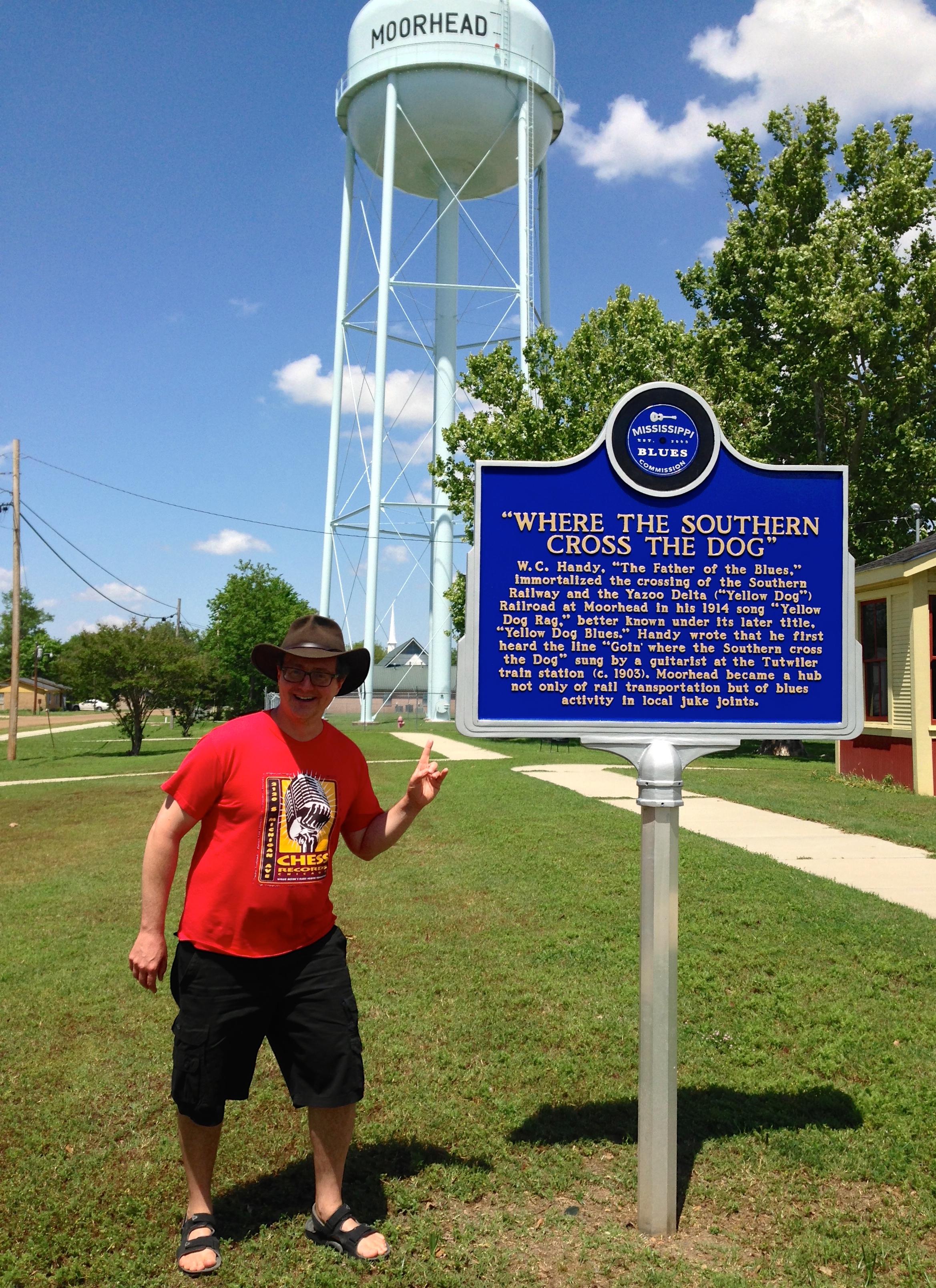
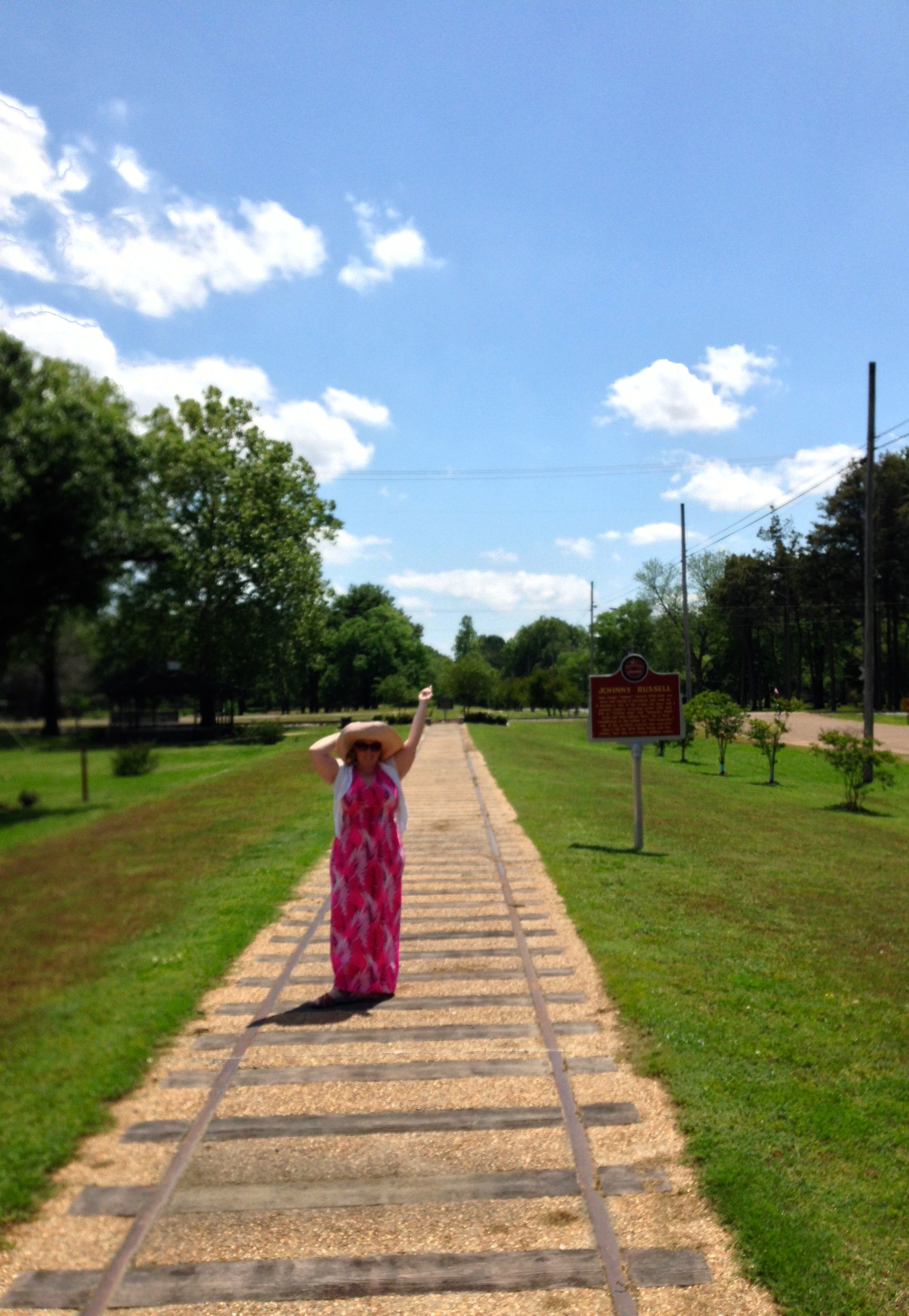
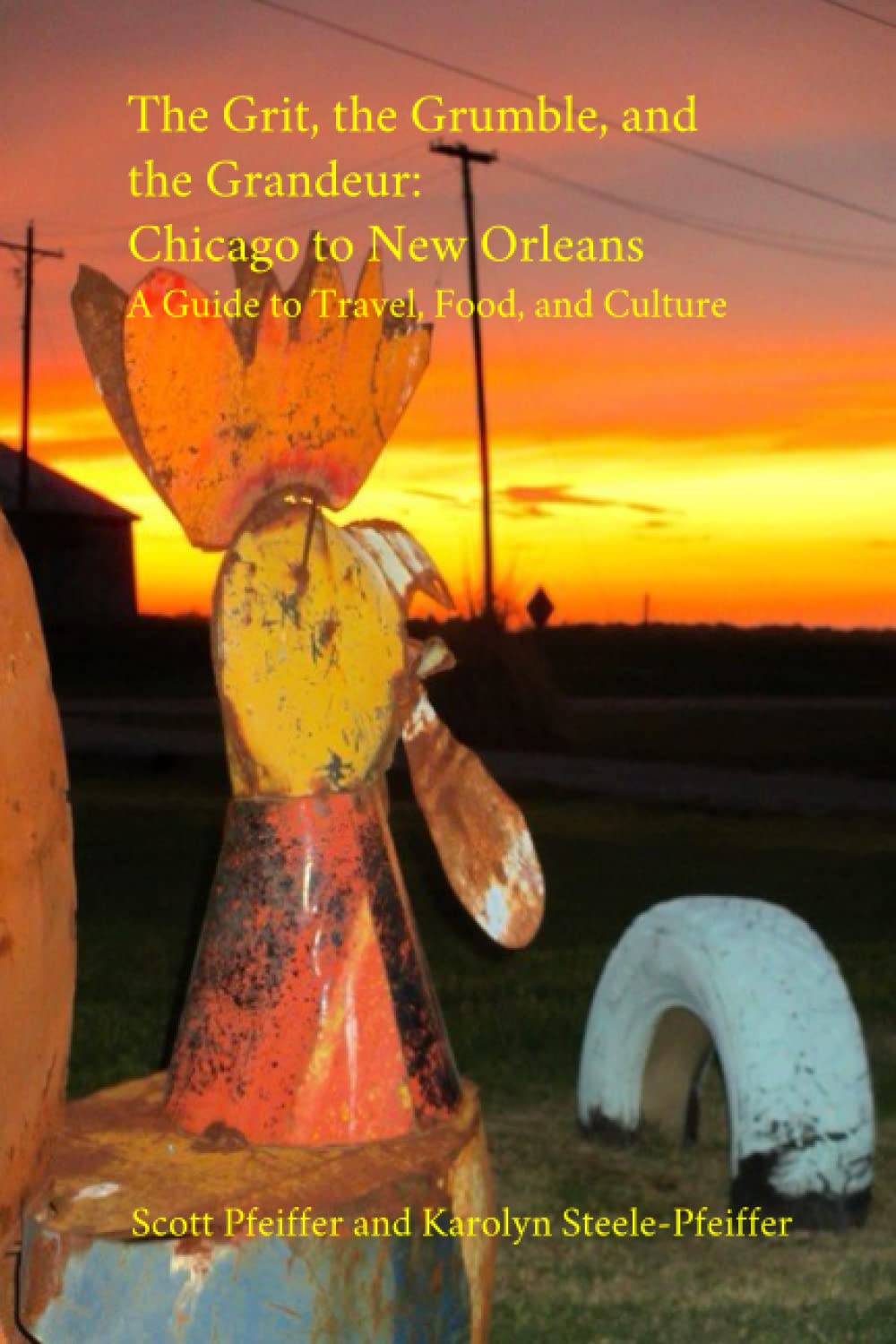

Reader Comments